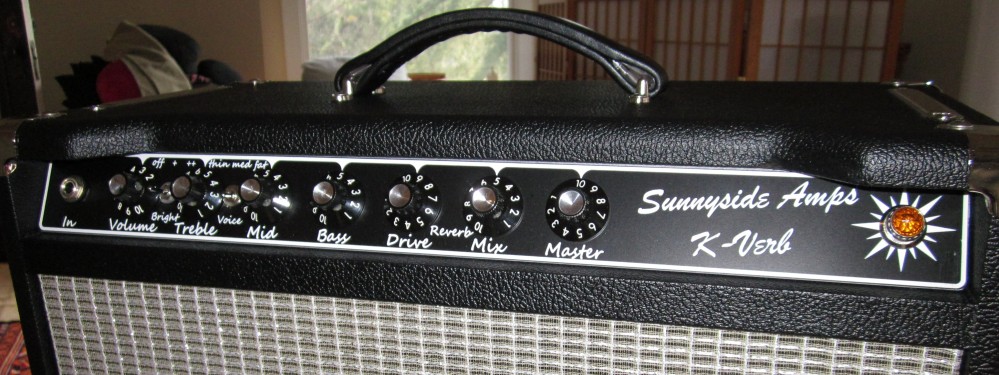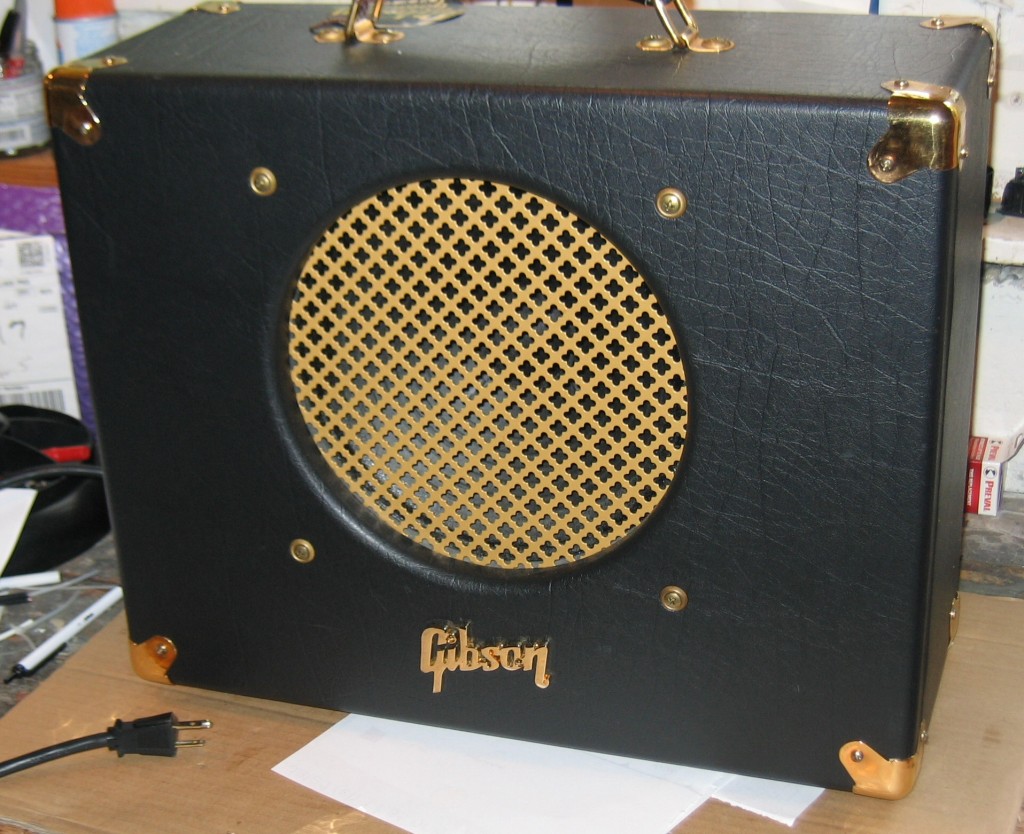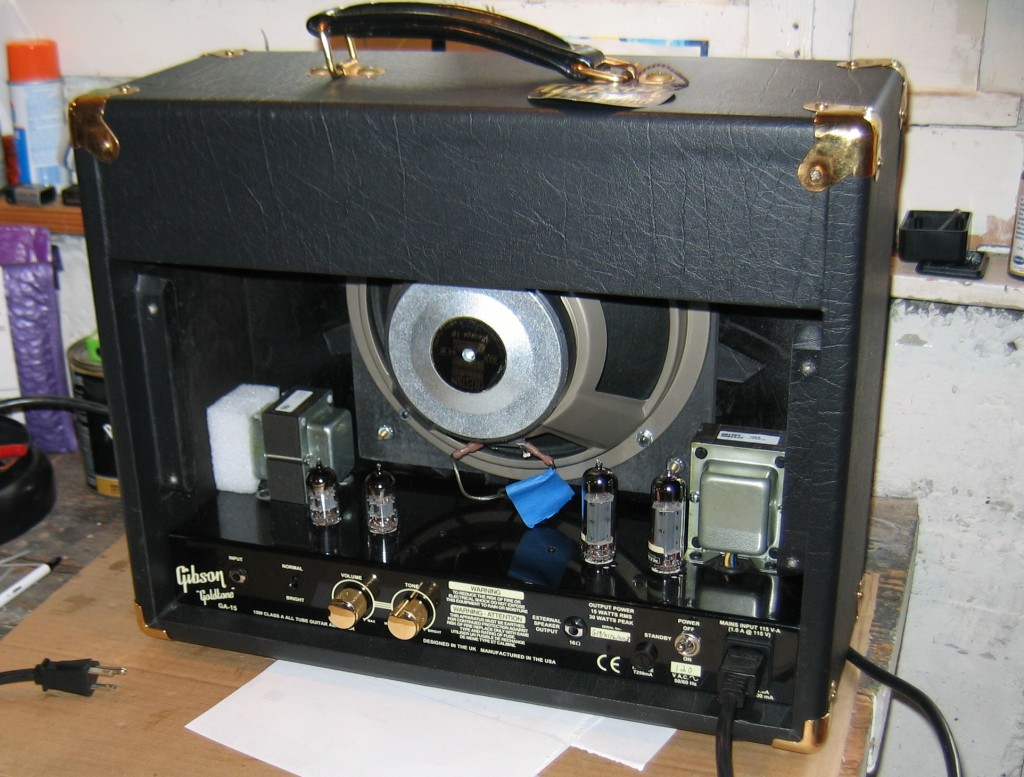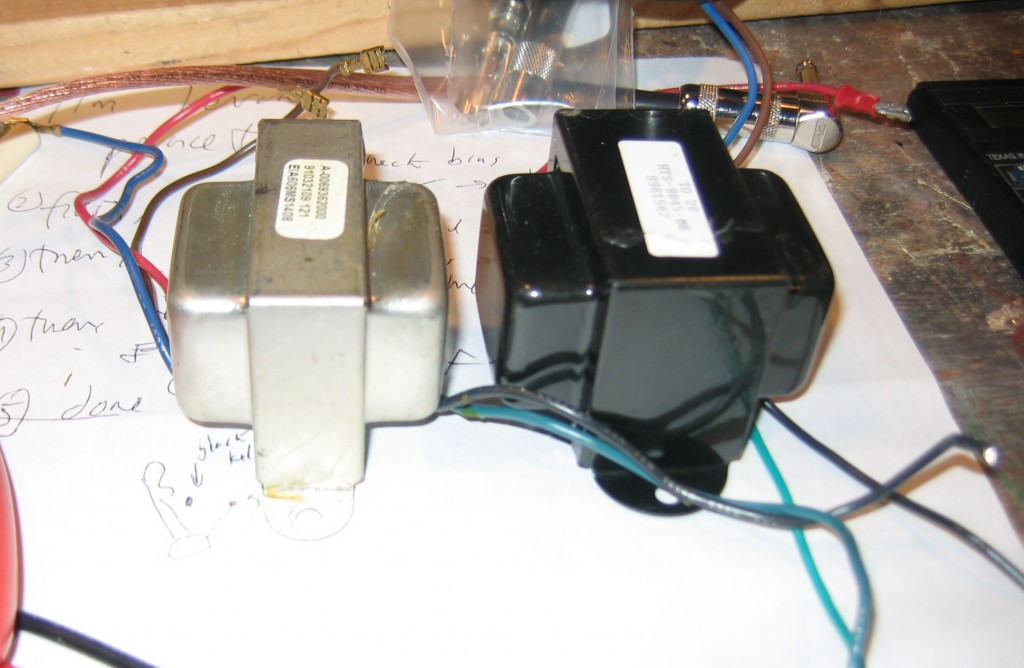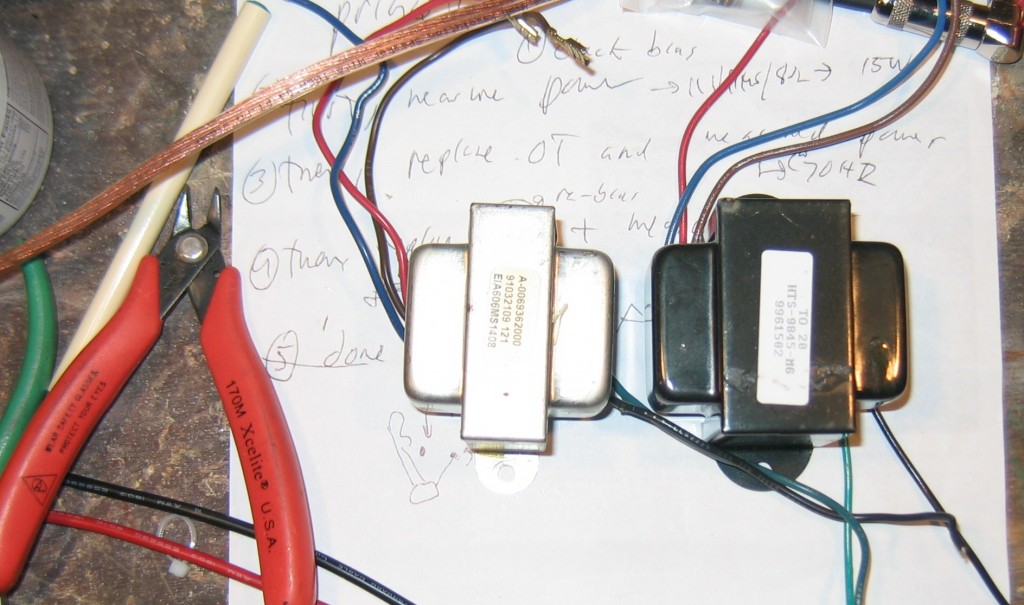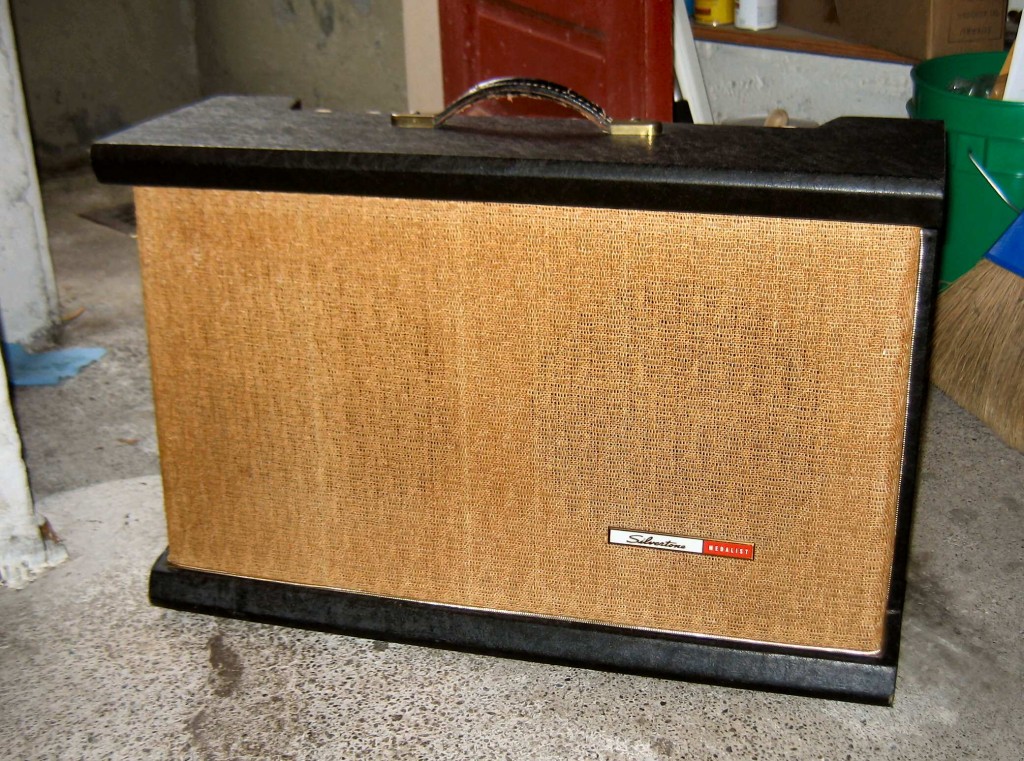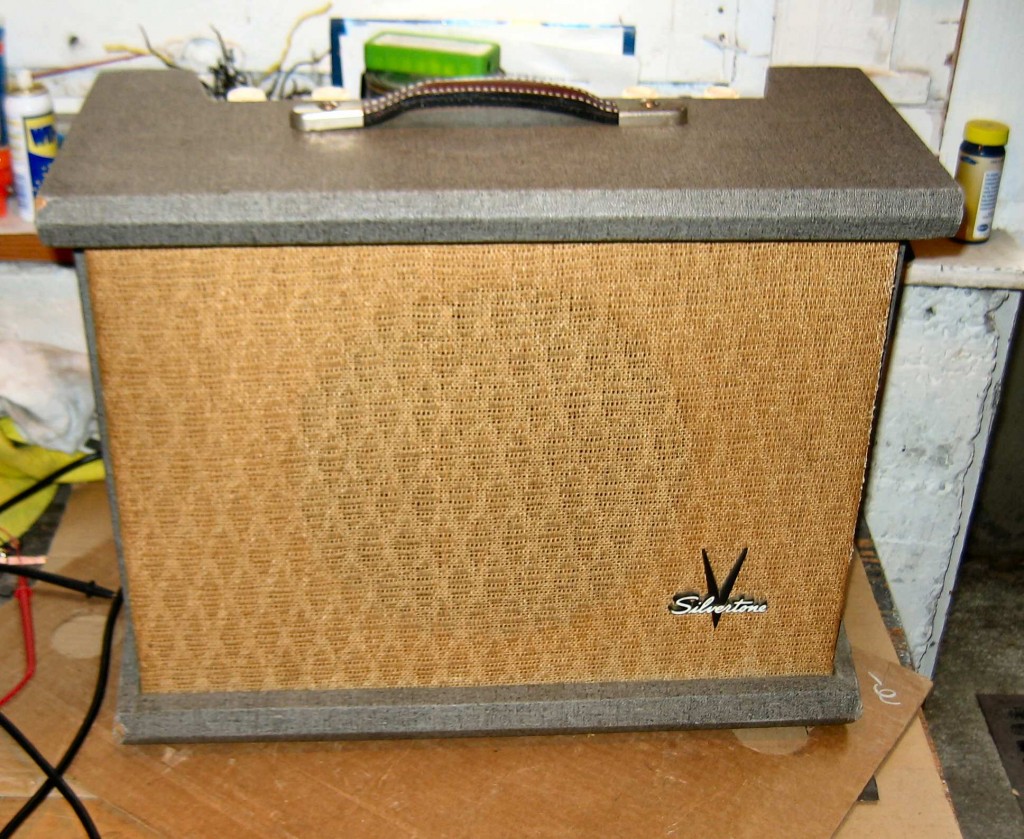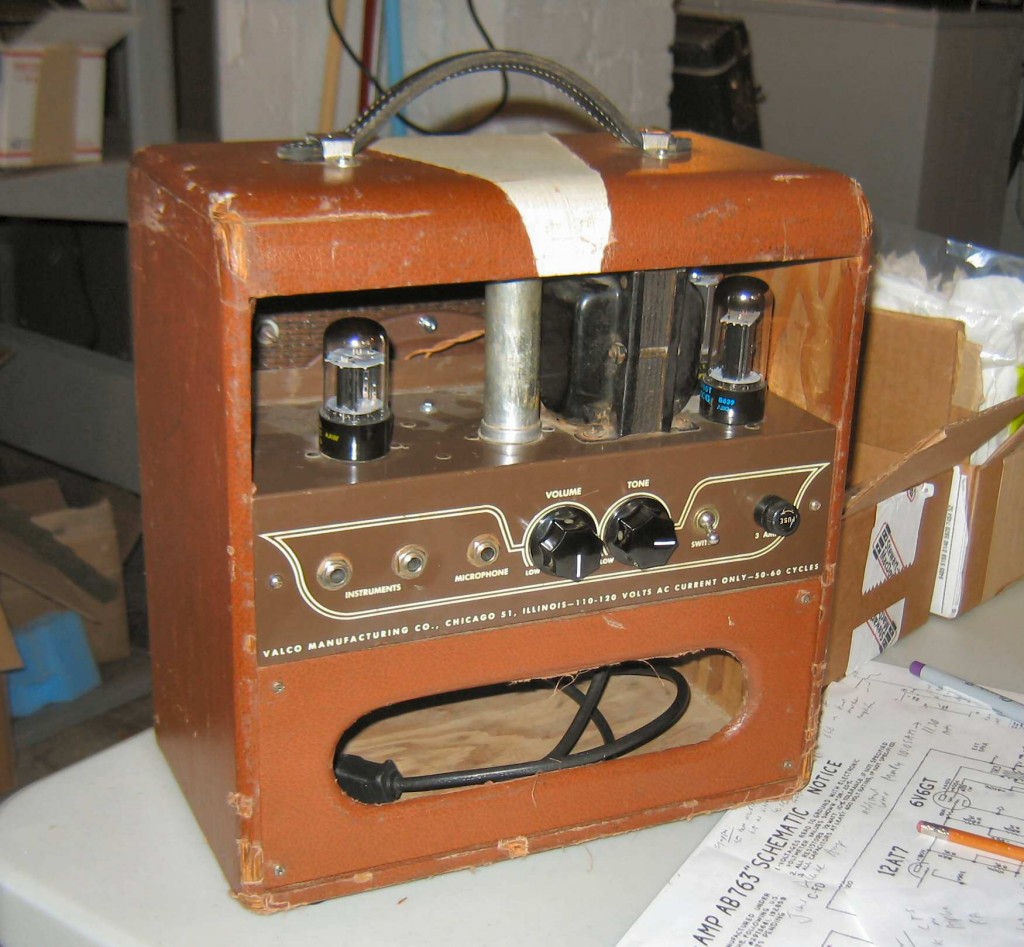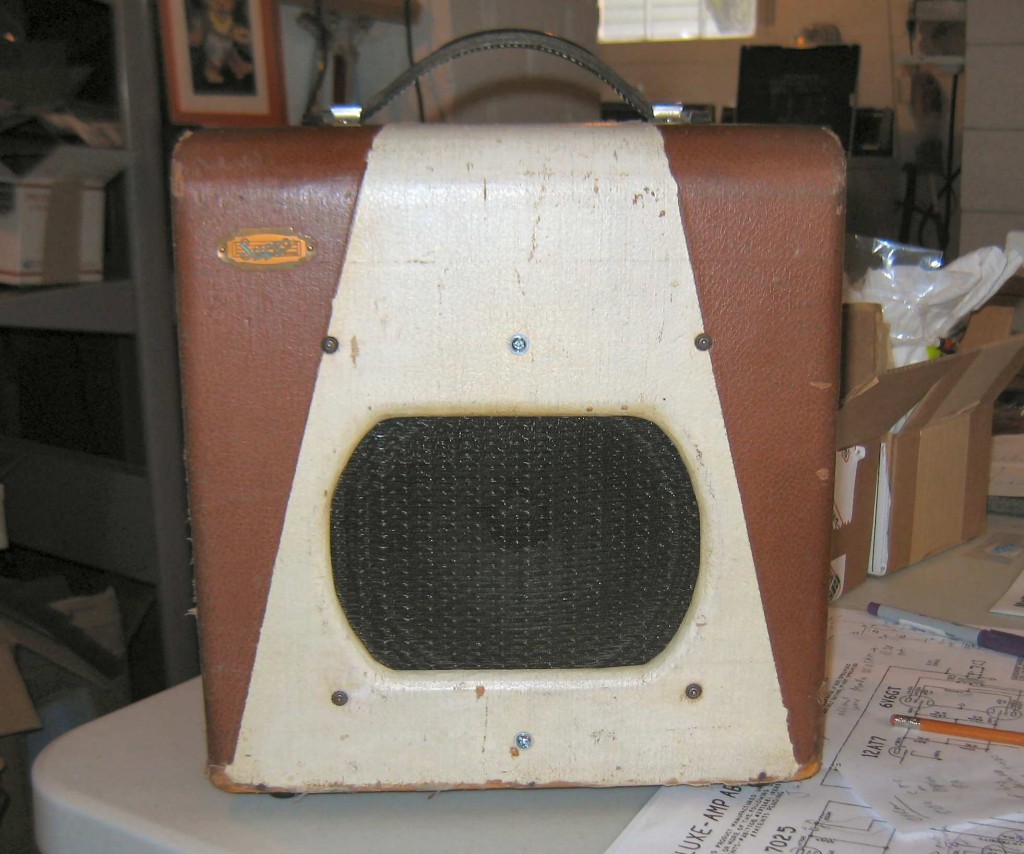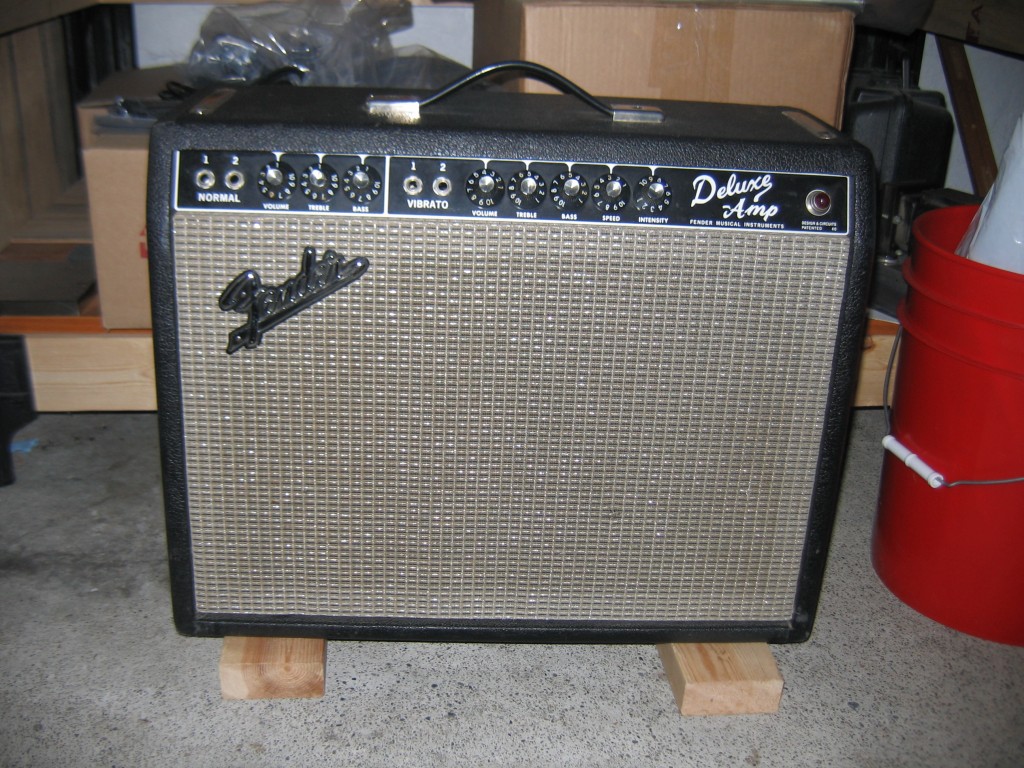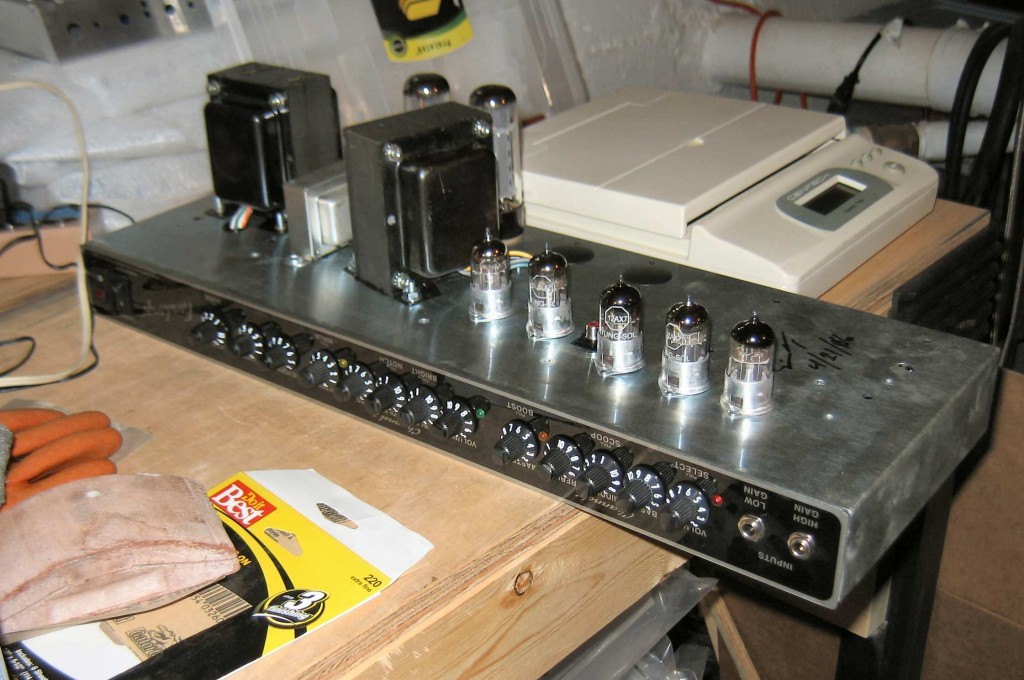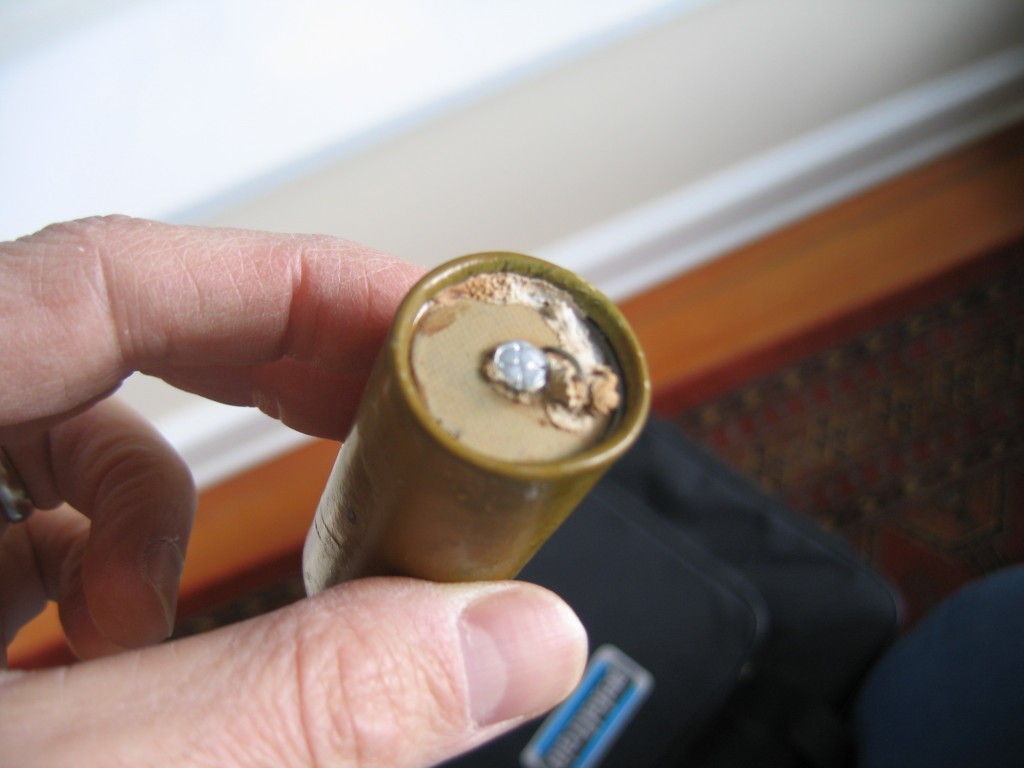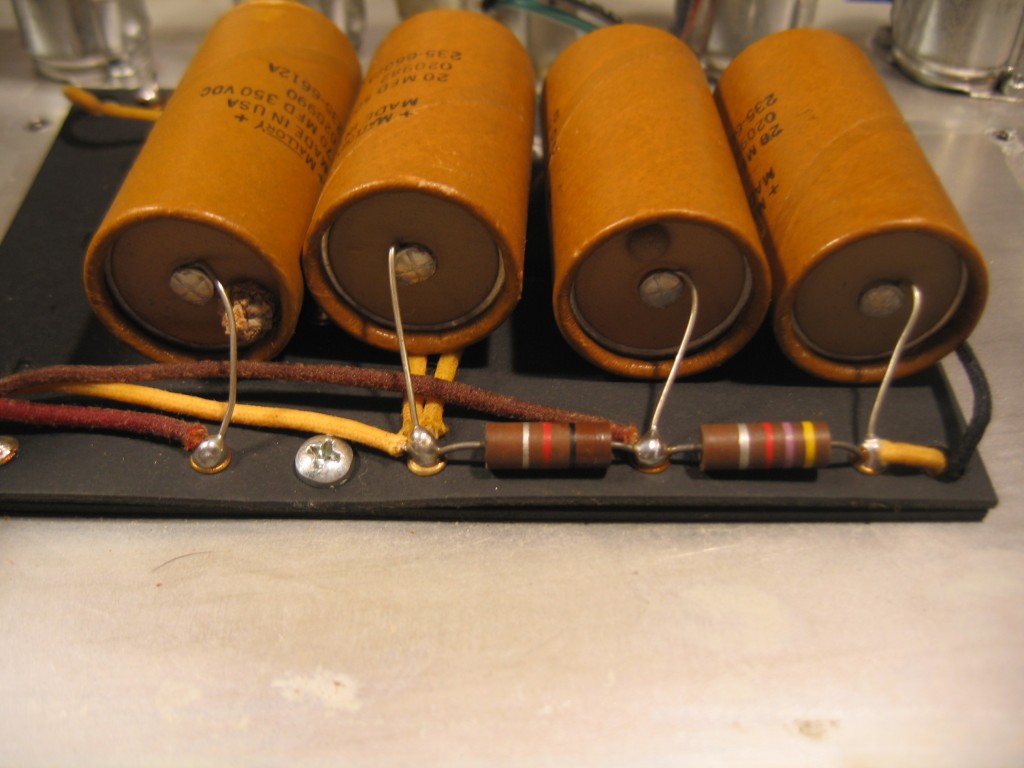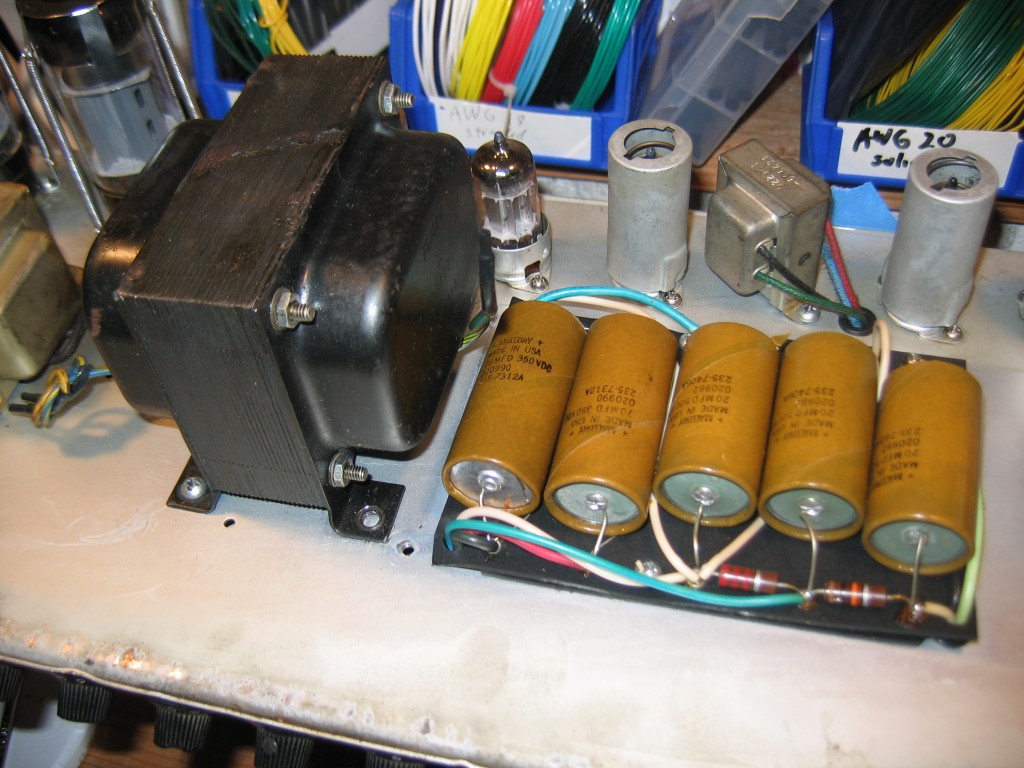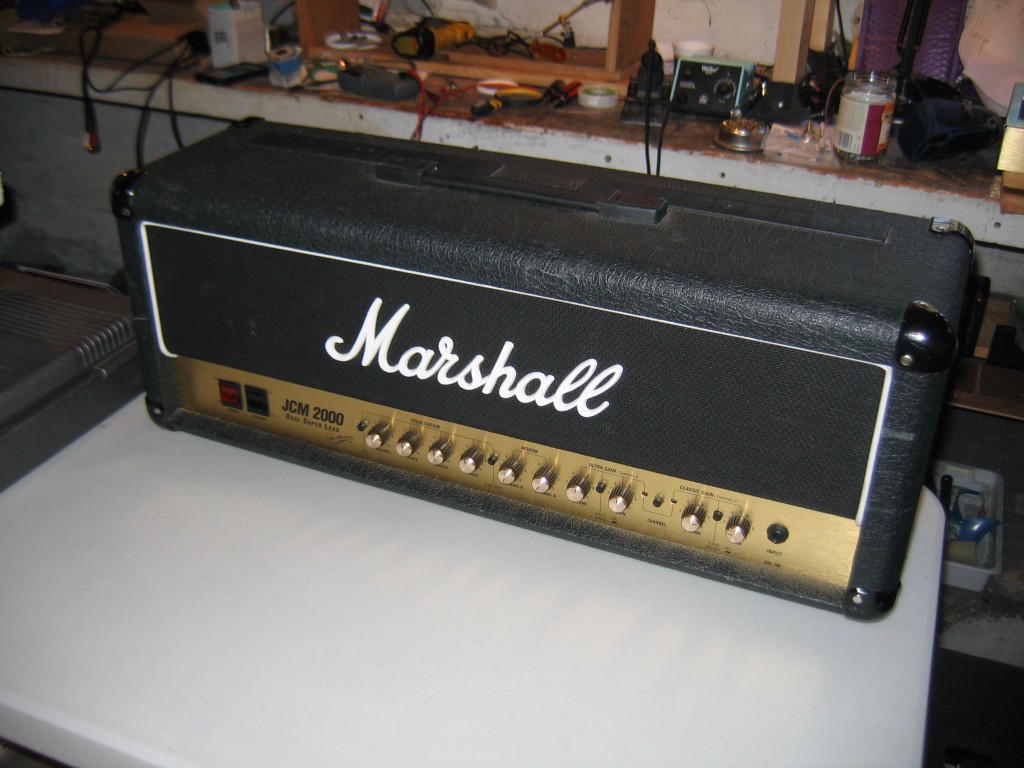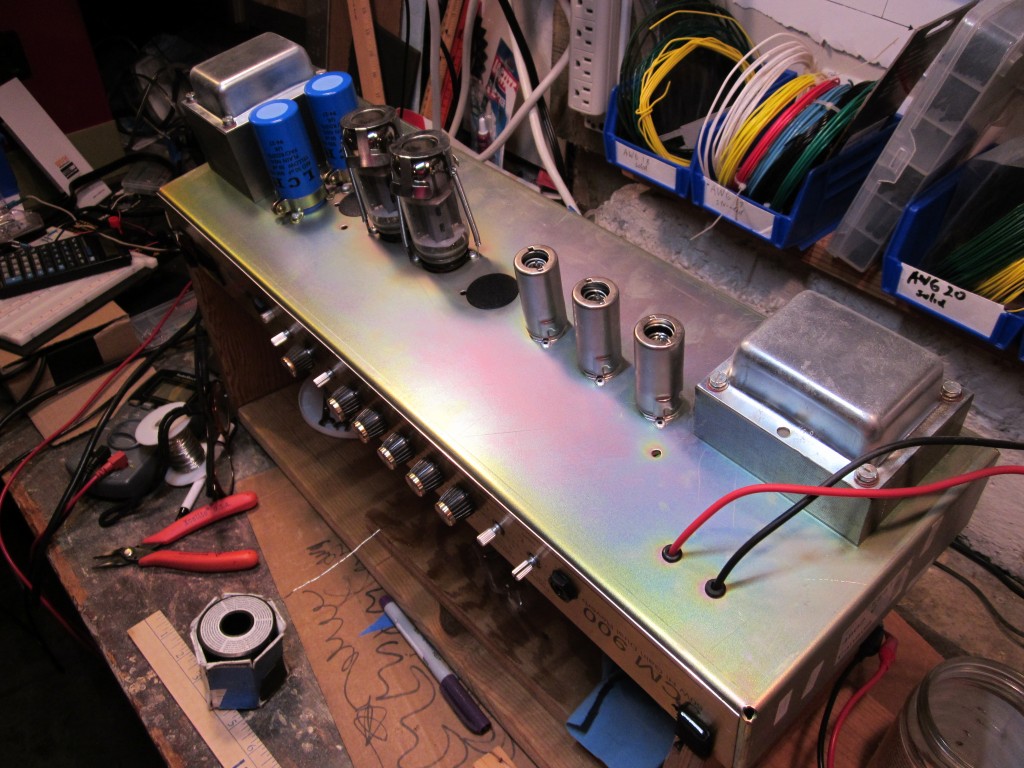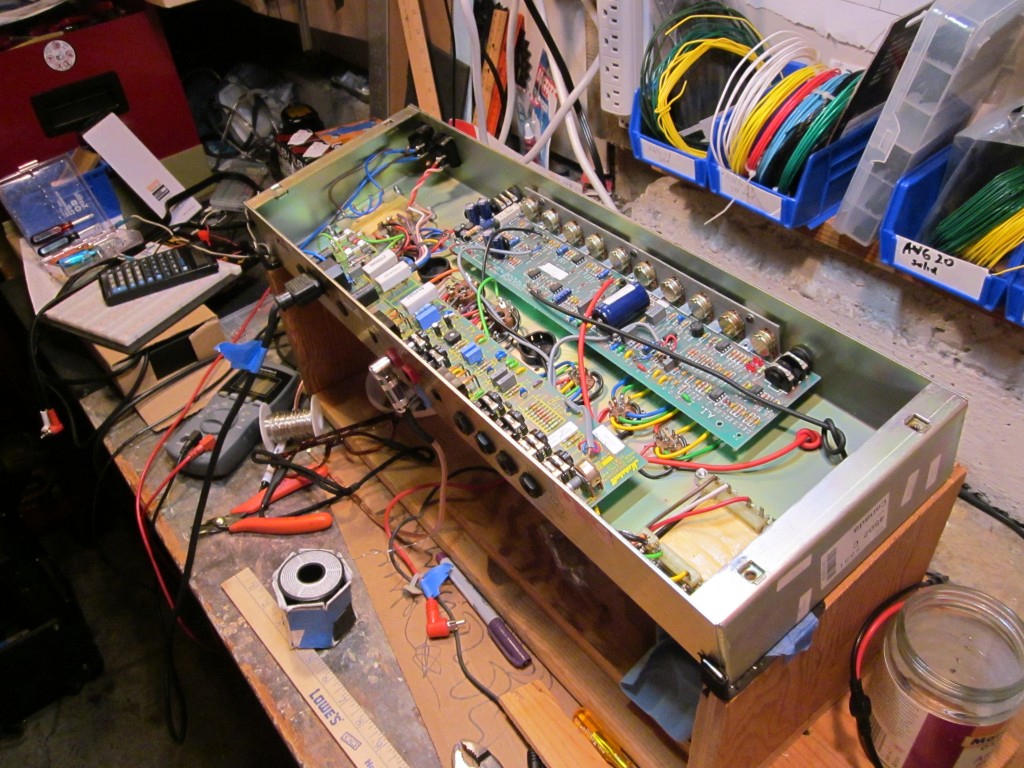Another Blues Jr. in the shop.
Lots of distortion – and, after some investigation: bad solder joints where the power tube sockets mount to the PCB. I have seen quite a few Blues jr’s with this exact problem.
What causes this? A few things. One is that the power tubes are oriented so that the heat from the tubes rises upwards to the solder joints. And after many cycles of hot (when the amp is powered-on) and cold (when amp is powered-off) the expansion and contraction of the solder creates cracks in the solder, and hence, a bad connection
Two: Fender designs the amplifier with a bias that runs the power tubes (EL84’s) at 100% just sitting there at idle. This generates a lot of heat, thus further exacerbating problem # 1.
I always recommend a change (modification) to the bias circuit that throttles the power tubes back a little. This takes about 1 to 1.5 hours due to the way the amp is constructed. You have to do some disassembling of the amp to be able to get to the side of the main pointed circuit board, to remove and add parts, solder/de-solder, etc). It’s worth it for the reliability the mod adds to the amp. Plus ,the amps power (output) tubes will last longer since they are being operated at a cooler temperature (less quiescent power being dissipated in the power tubes)
So, its bad enoug
